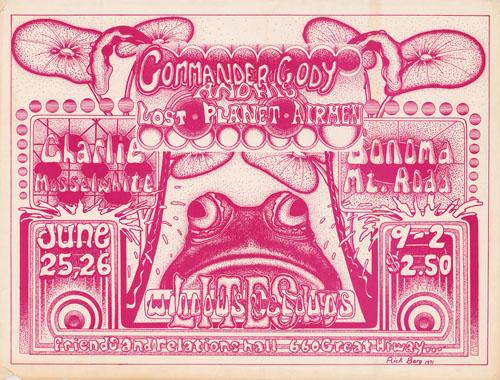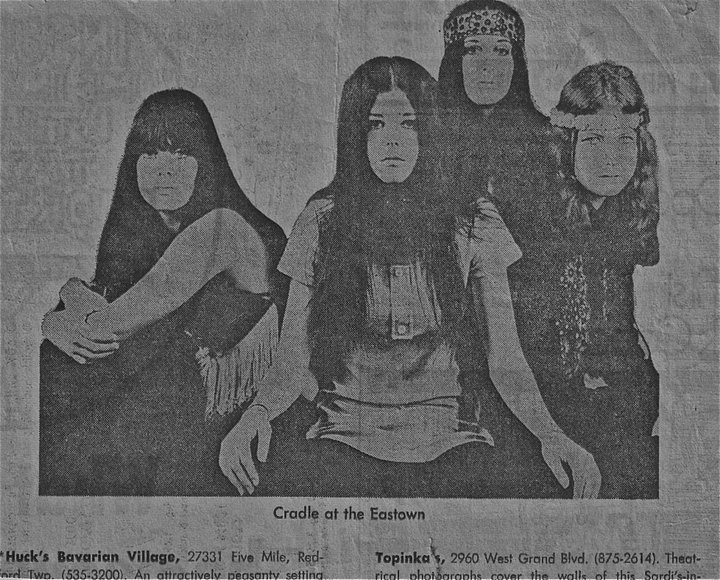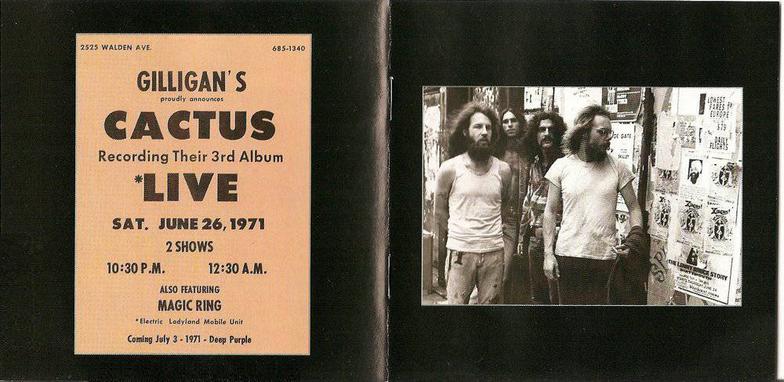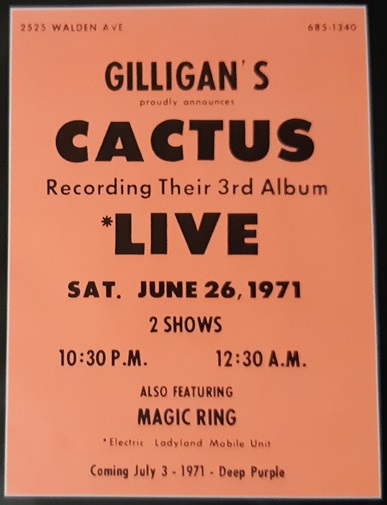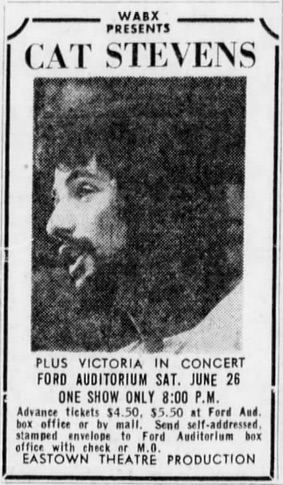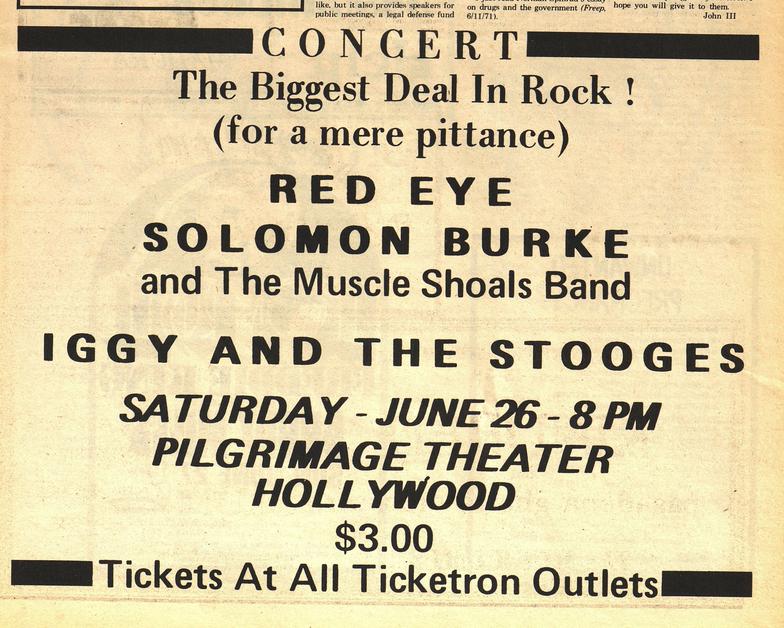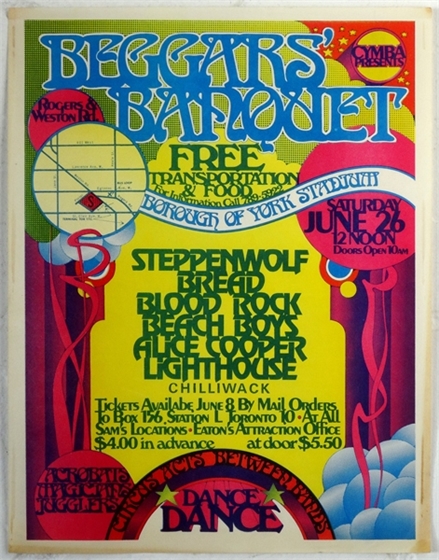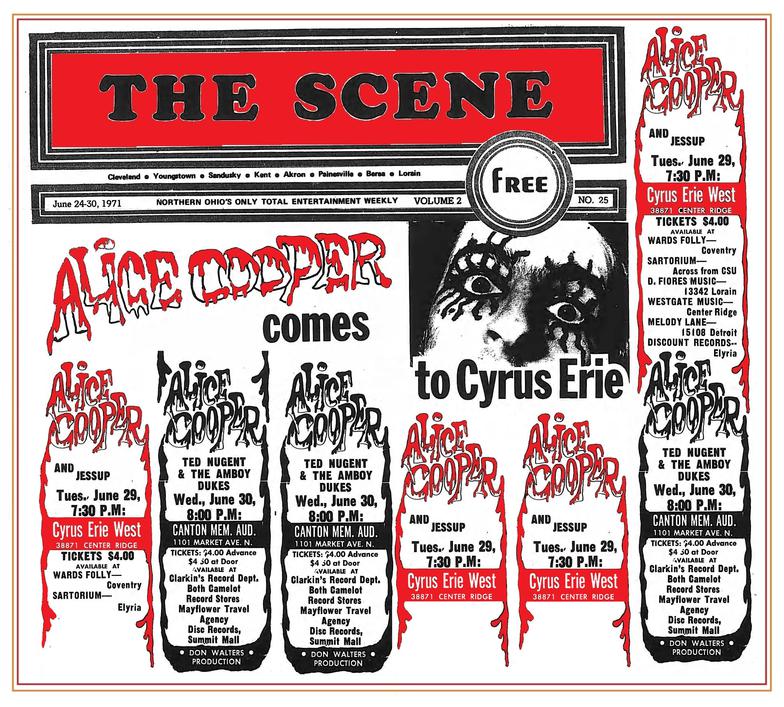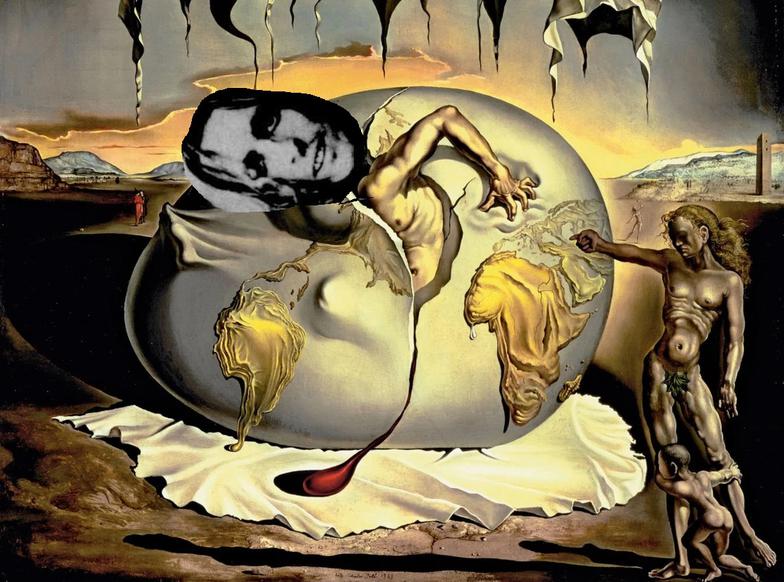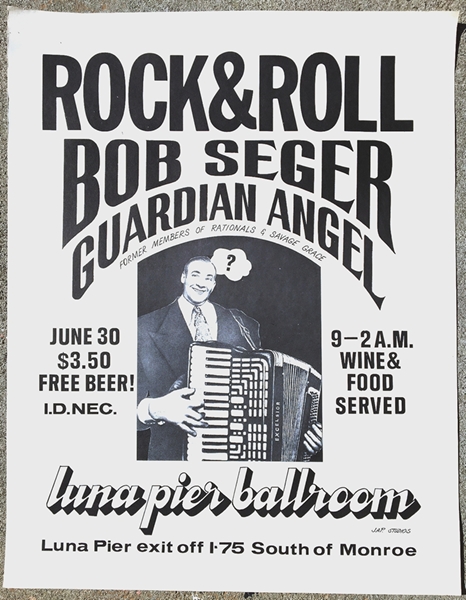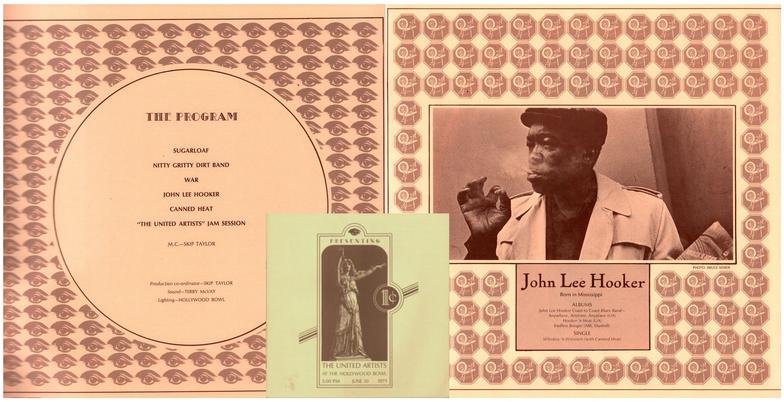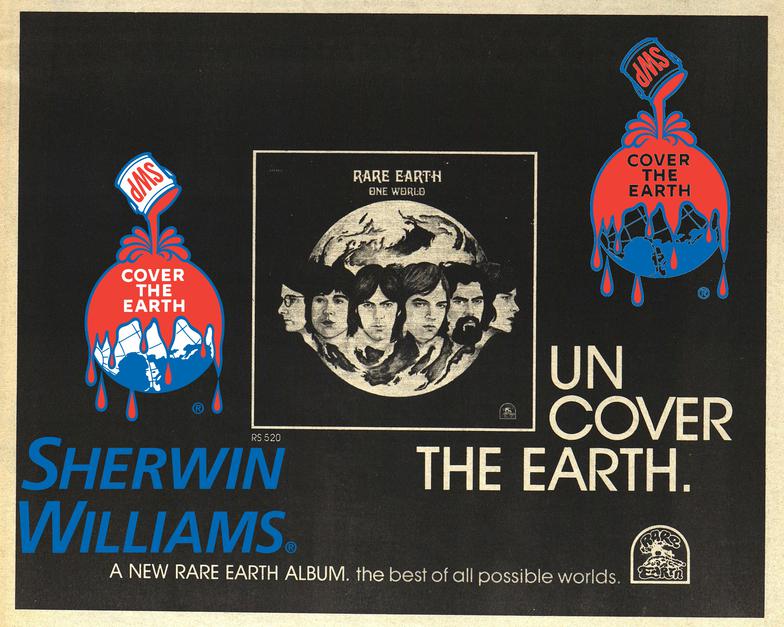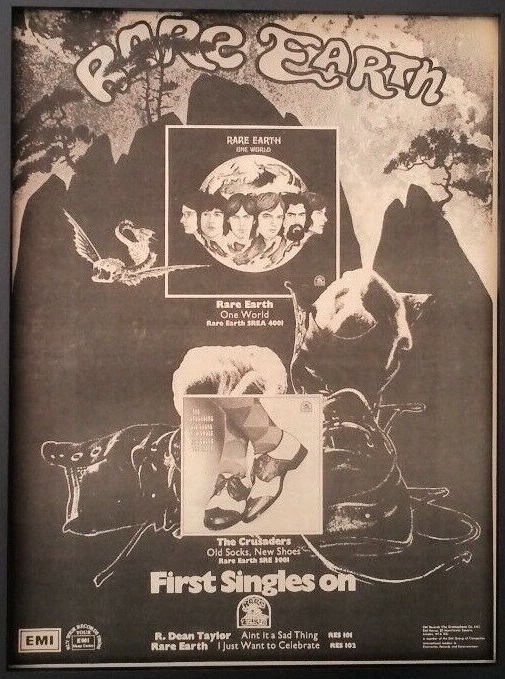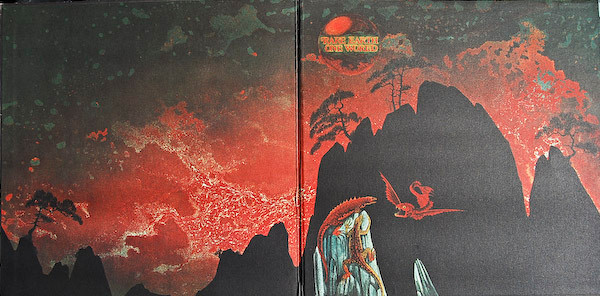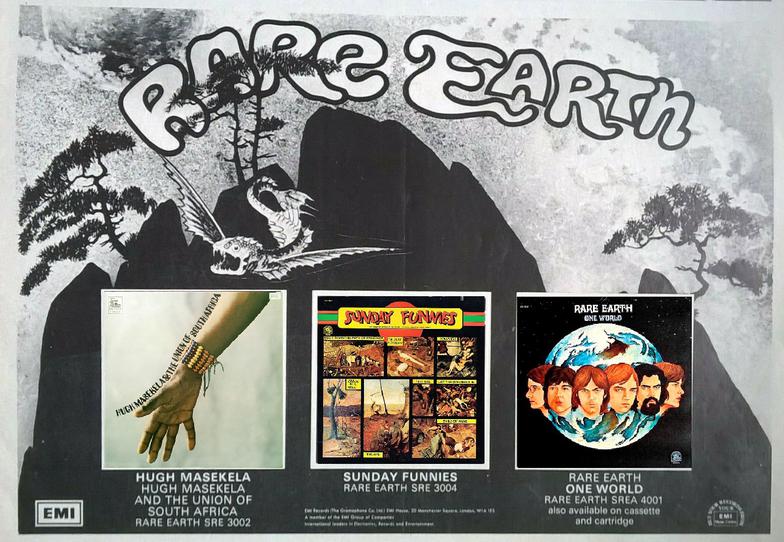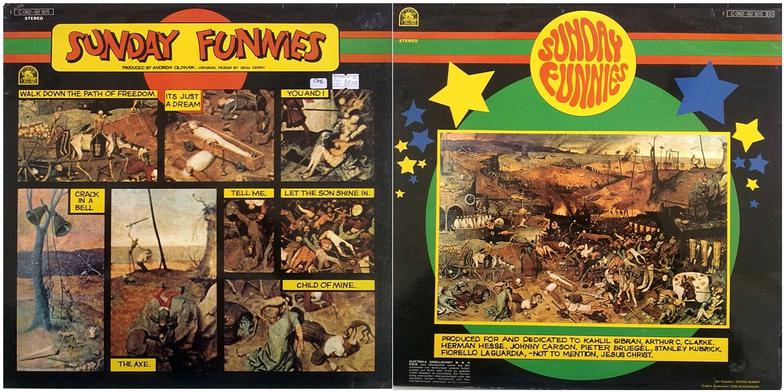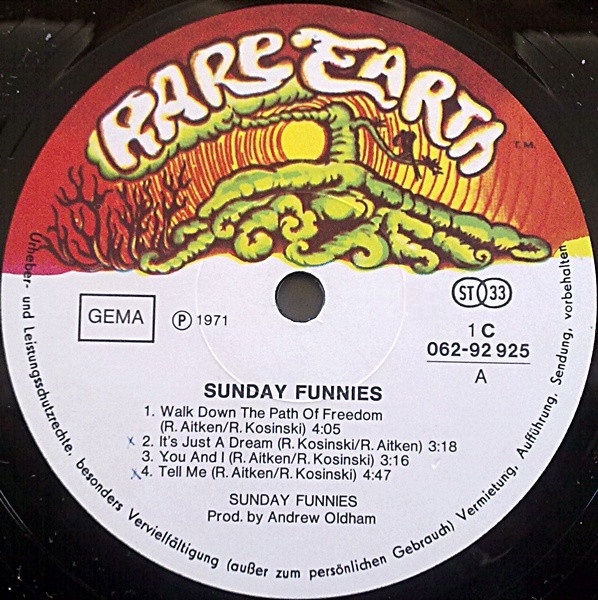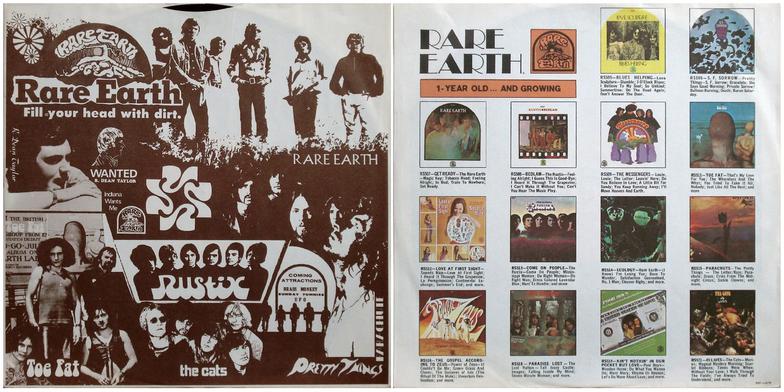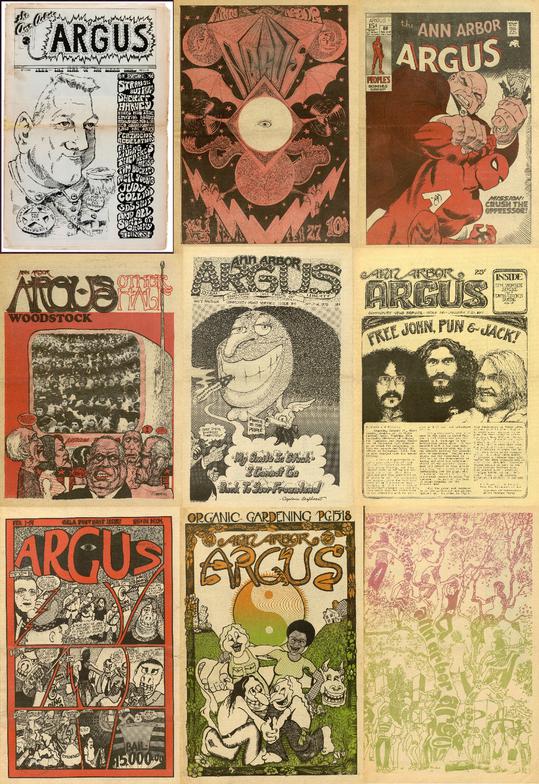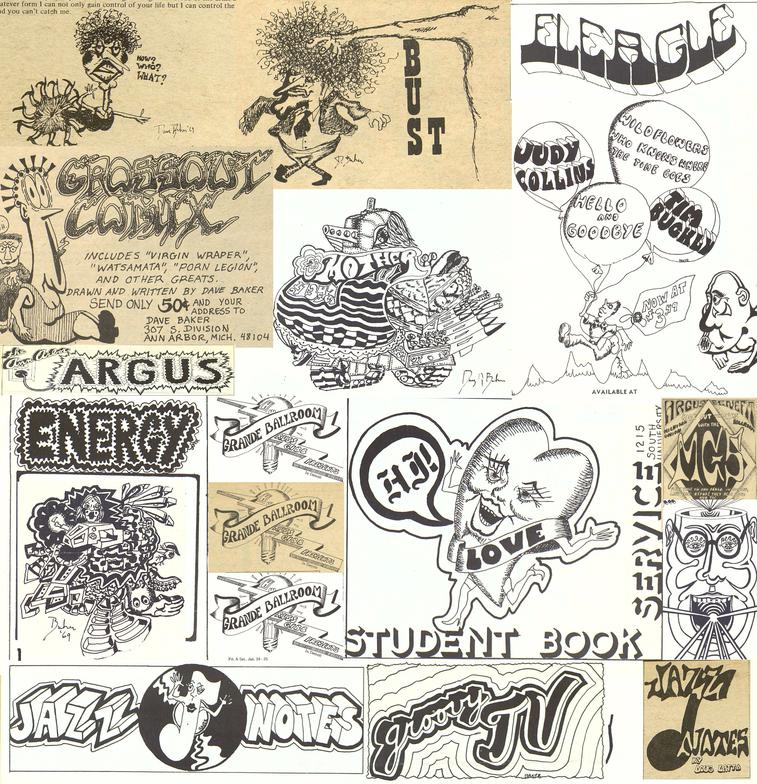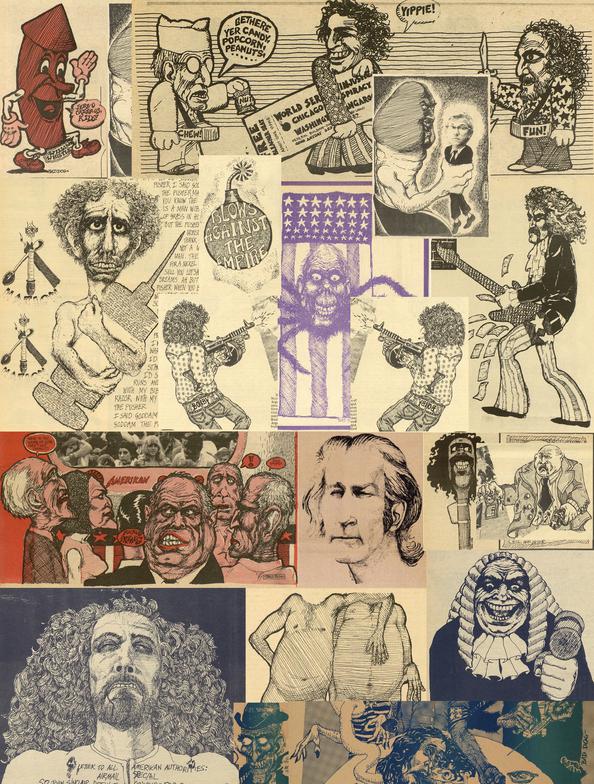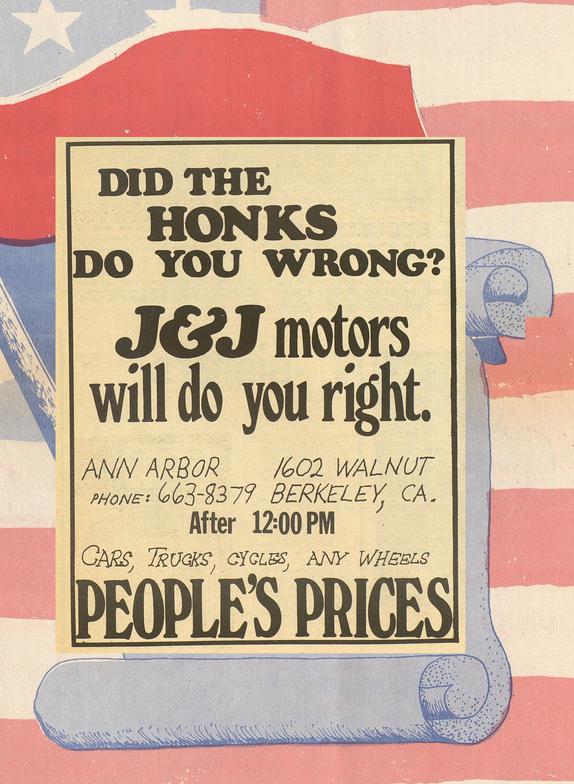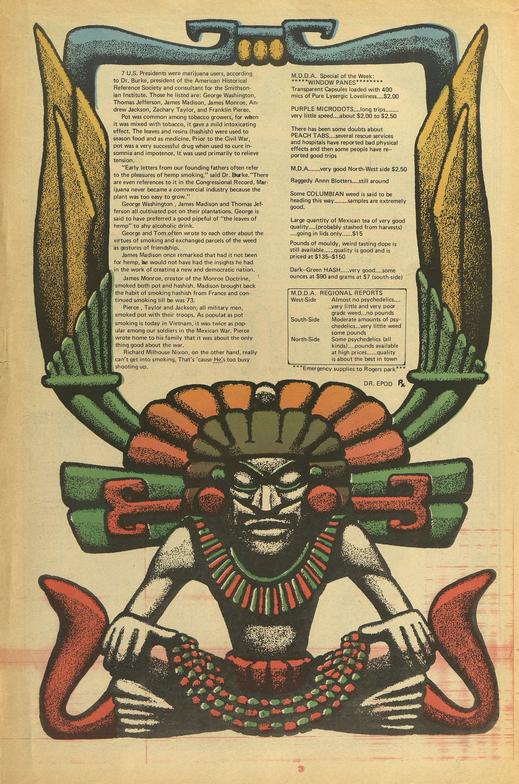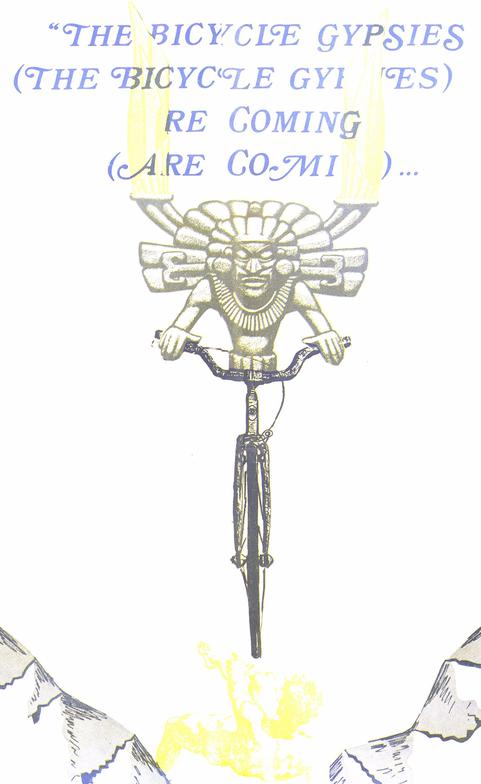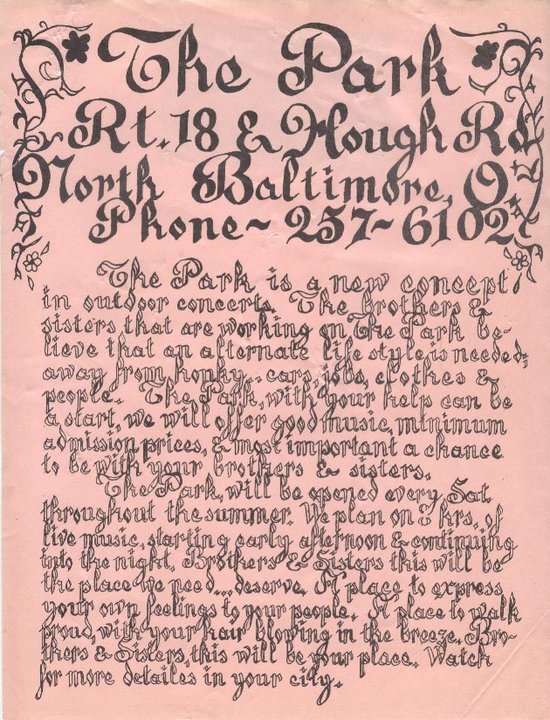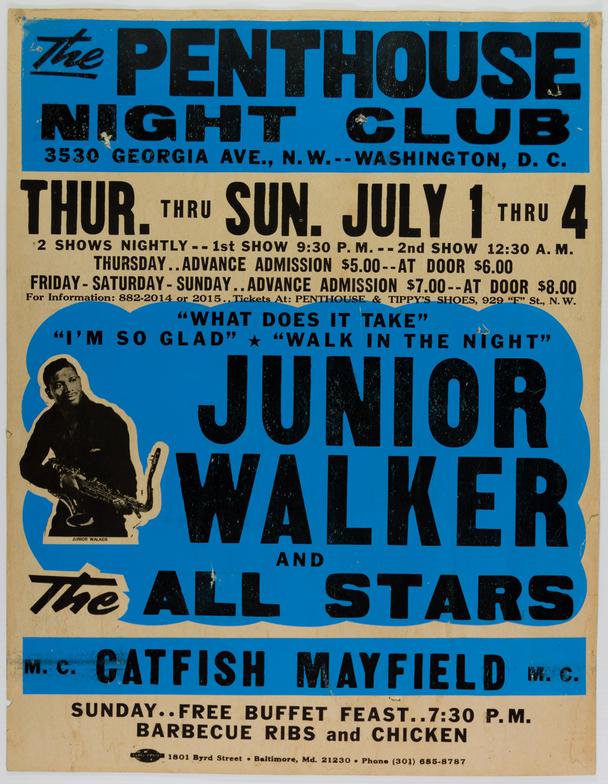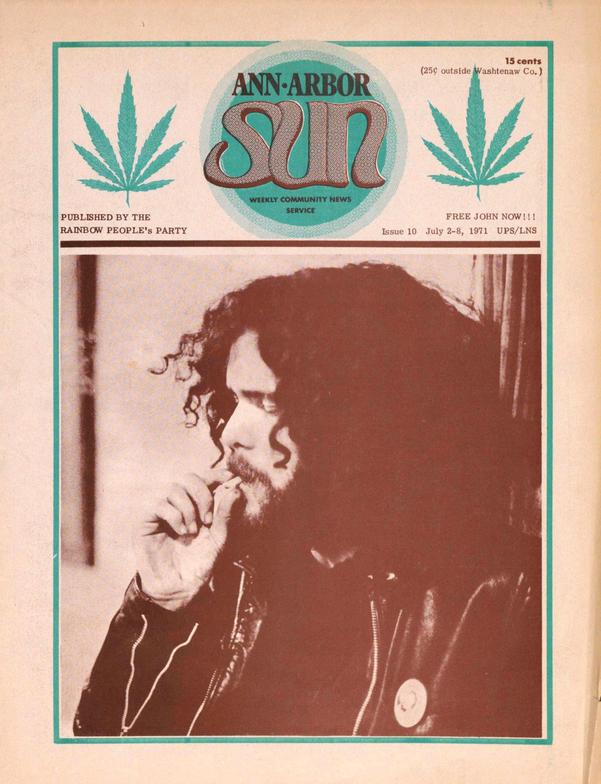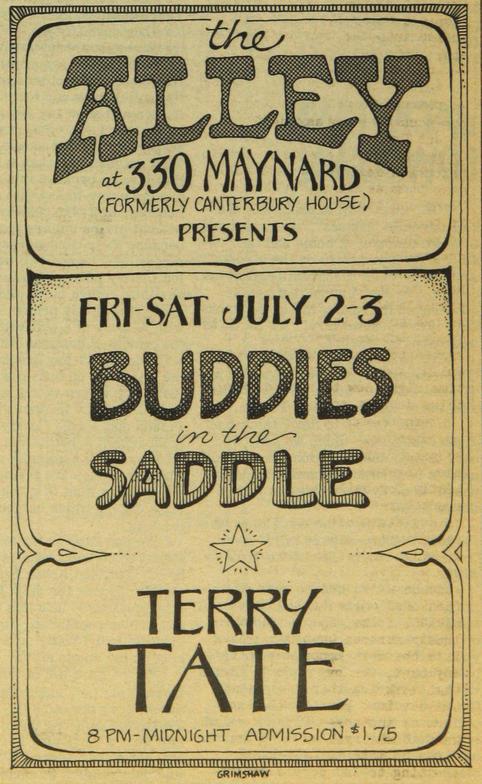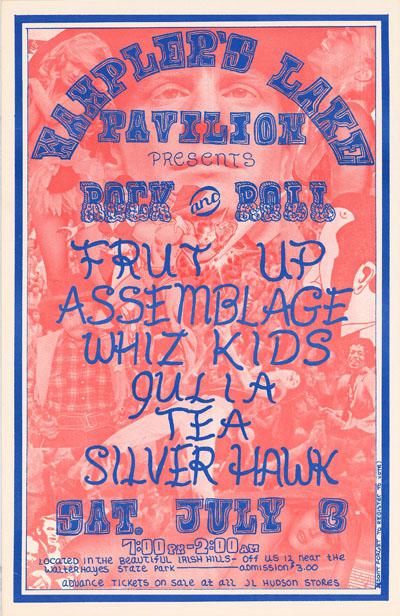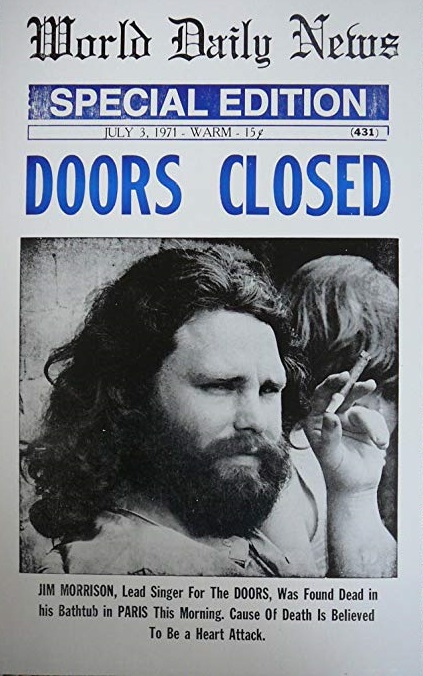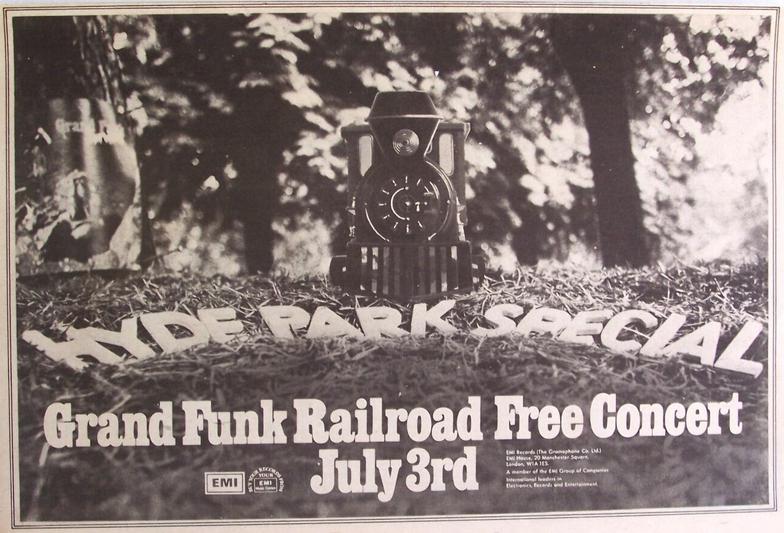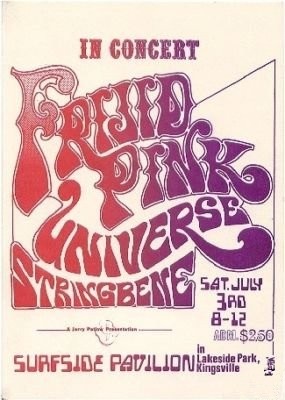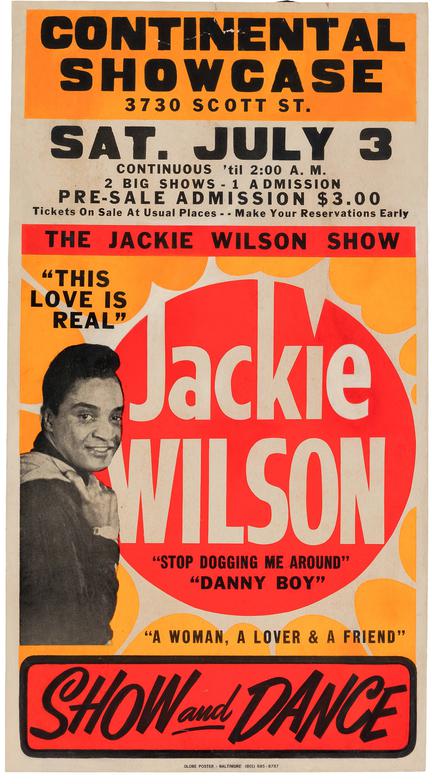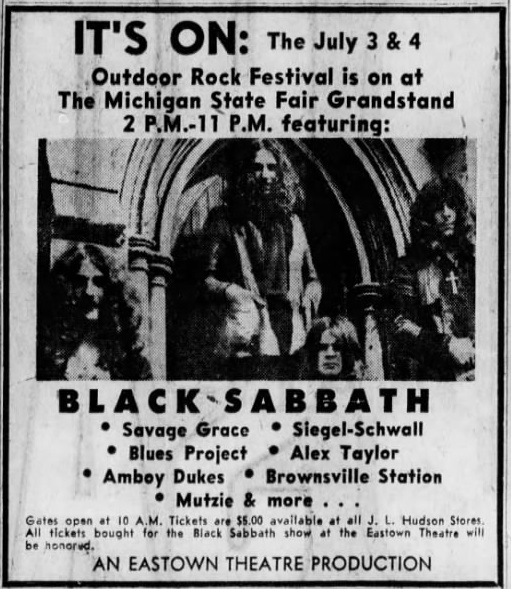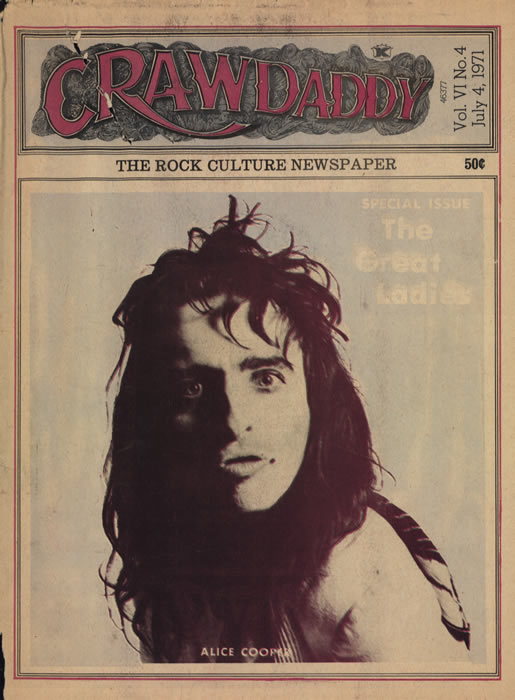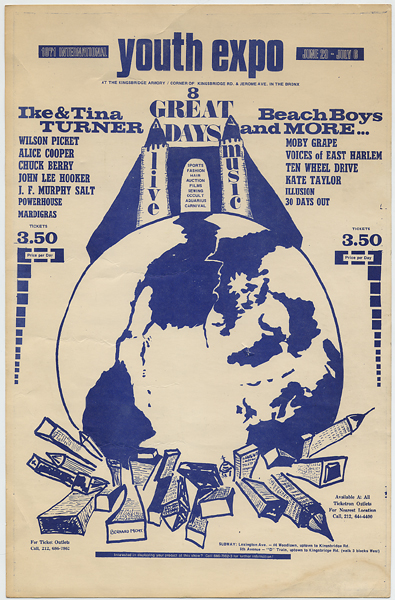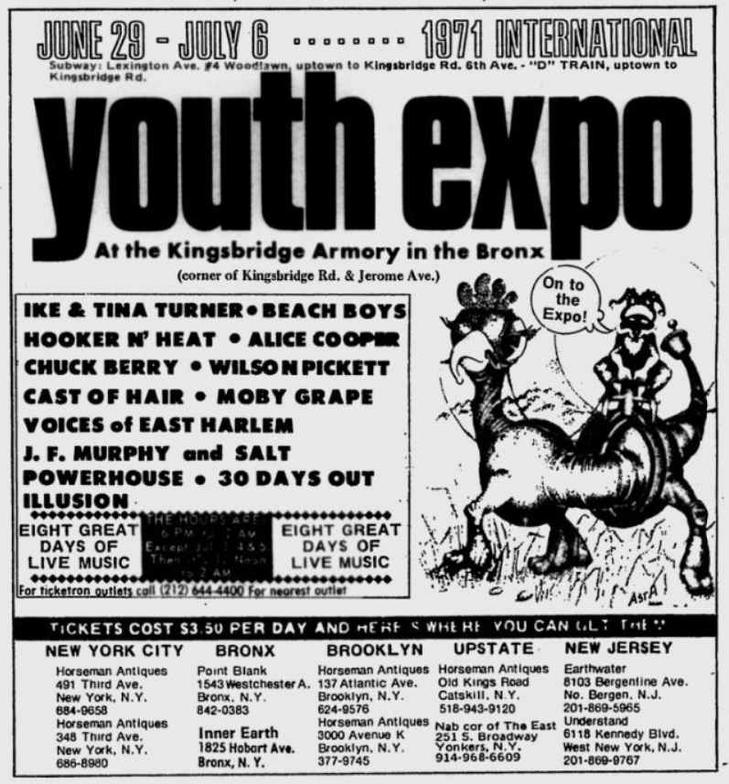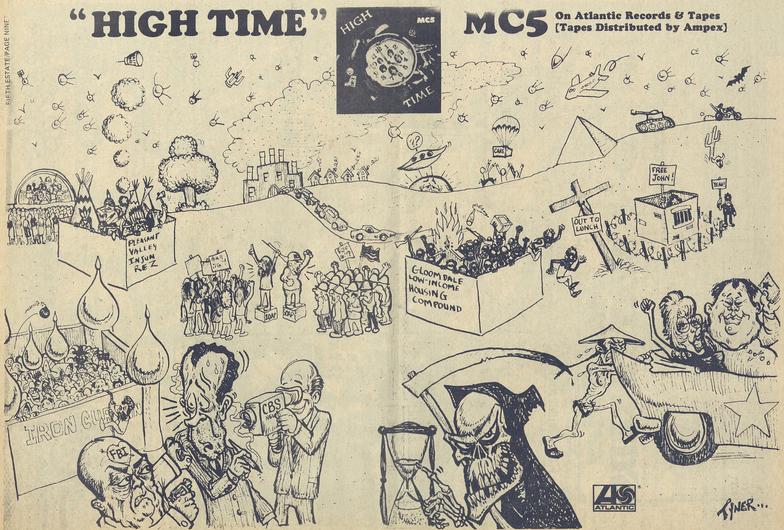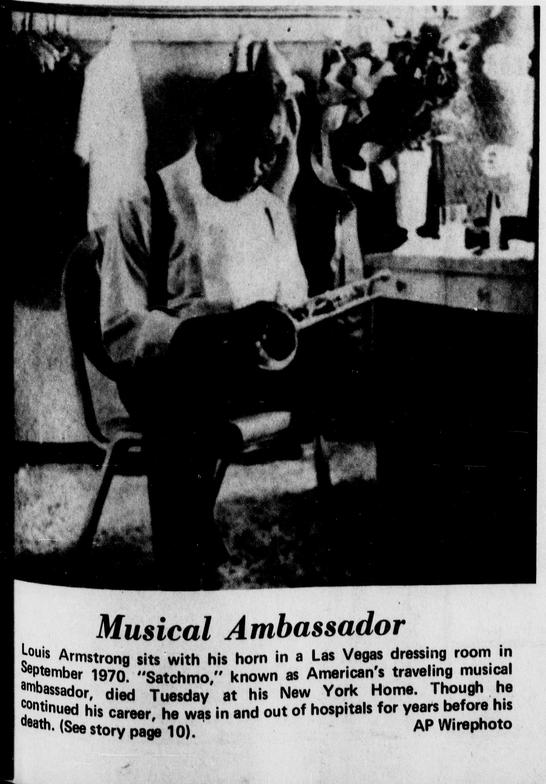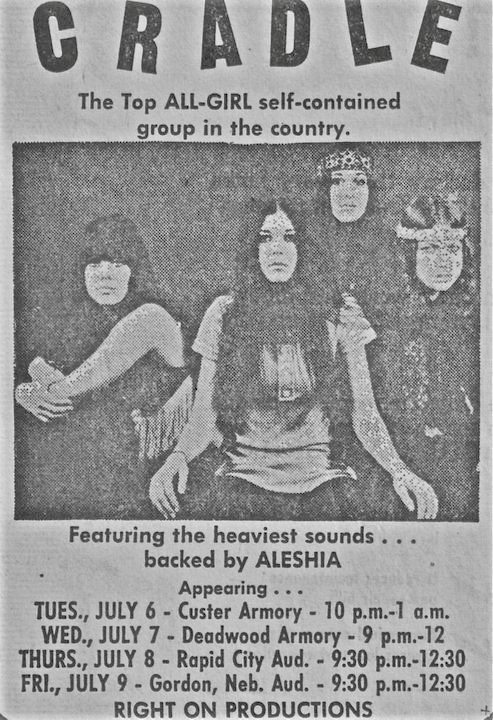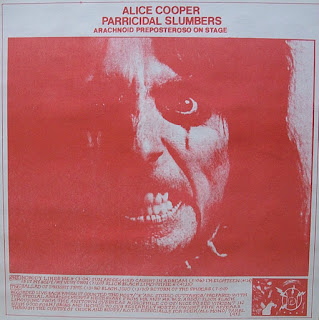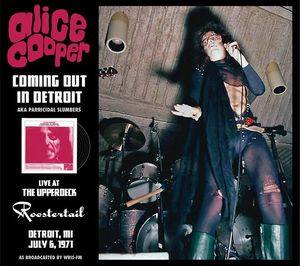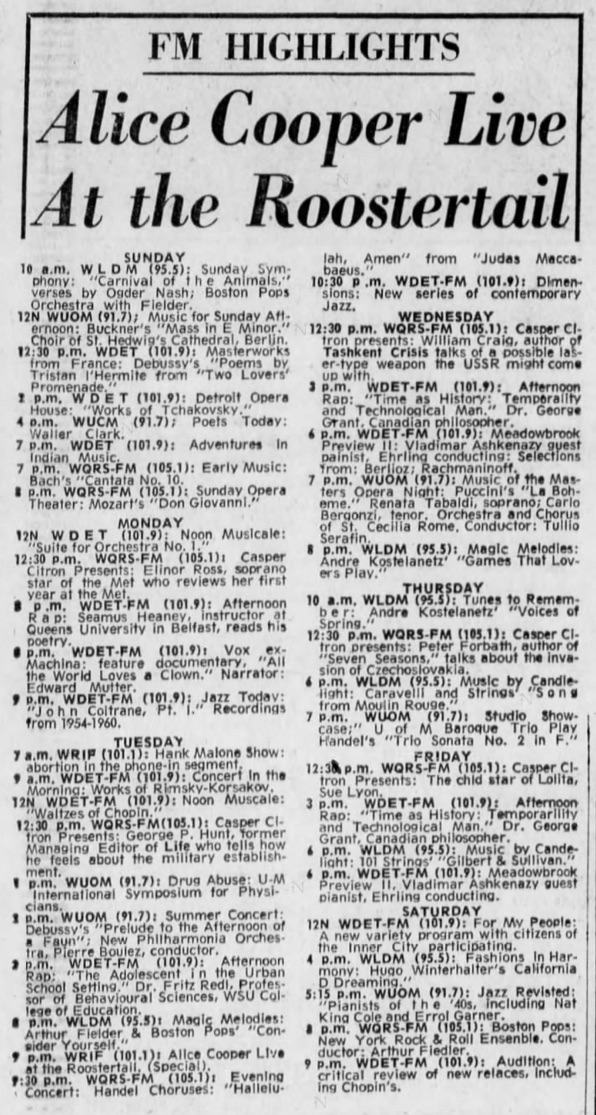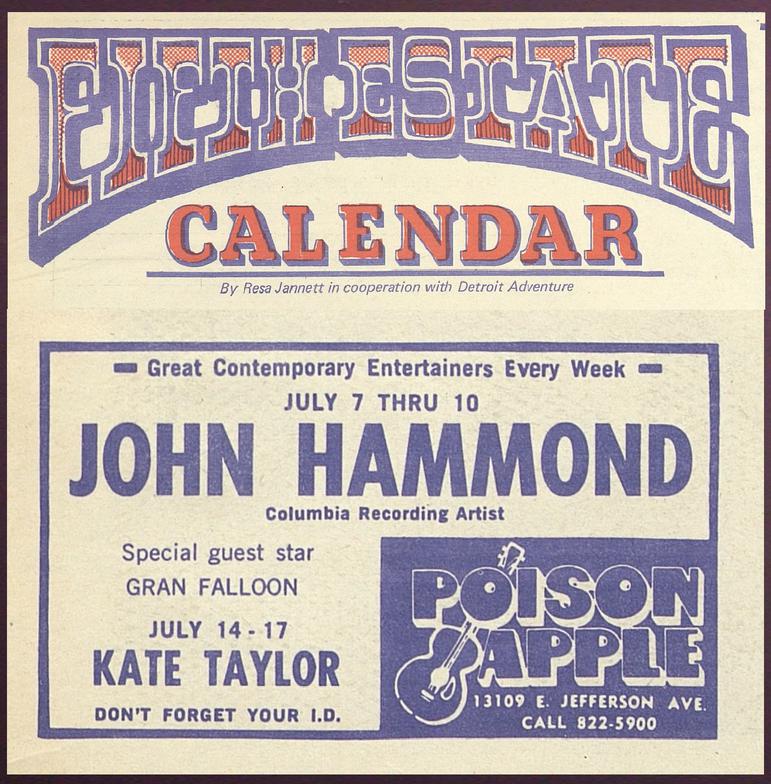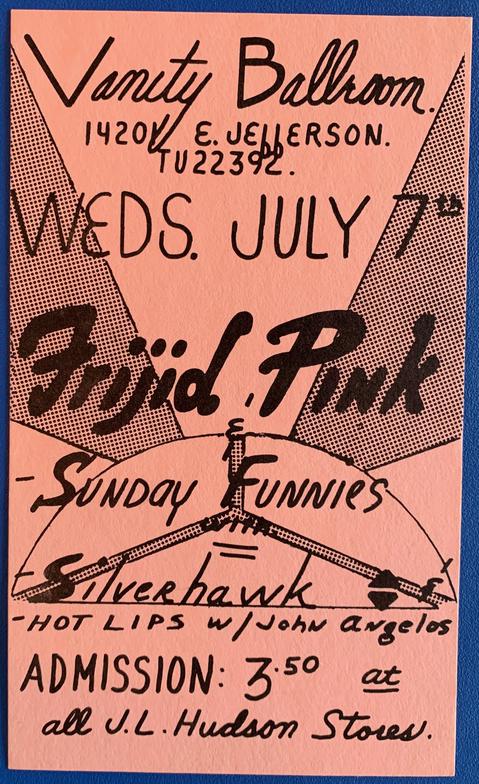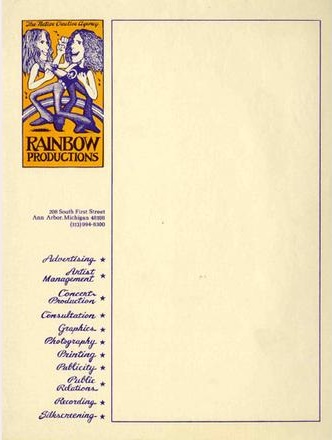Splatt Gallery
Double click here to add text.
Splatt Gallery's History of Michigan Concert Posters
Volume Seven - 1971 - Page Eleven
***********************************************************
Poster by Rick Berg for Commander Cody & his Lost Planet Airmen at the Great Highway in San Francisco, California, June 25-26, 1971.
Cradle appeared at the Eastown Theater in Detroit, June 25-26, 1971, opening for The Rascals. It was the fourth and fifth, and final, Detroit appearance (until oldies reunion tours in the late 80’s and beyond) for the New Jersey group, The Rascals. The Detroit appearances are a good snapshot of The Rascals’ career trajectory. Their first show in the state was for a private party, a “Debutante Ball for Martha Parke Ford” in 1966. Their next two appearances, in 1968 and 1969, were at the 12,000 seat Cobo Hall, the peak of their popularity. The 1971 shows at the 1,700 seat Eastown were in their decline, they dissolved in 1972.
For Cradle’s Eastown shows, all we got was a picture in the calendar section of the newspapers, but the band then embarked four-show tour in July, for which there is this poster from Right On Productions.
The poster for a show by Cactus at Gilligan’s in New York, June 26, 1971, indicates that they would be recording the show for their third album, but from what we can tell, the third album was recorded in the Electric Lady studio.
Poster for Cactus at Gilligan’s in Buffalo, New York on June 26, 1971. As described on the poster, the band was intending to release a live album but that never ended up happening during the band’s existence. Two tracks from this show were included on the 2004 release “Fully Unleashed – The Live Gigs”. Later, this full show was released in 2007 as “Fully Unleashed - The Live Gigs Vol. II”.
This show is also unique in that the band, at the time, included a rhythm guitarist named Ron Leejack who was with the band only briefly.
Cactus – Live at Gilligan’s, Buffalo, New York (6/26/71)
https://www.youtube.com/watch?v=CNAJrnD-3K0
Newspaper ad for the first Michigan appearance by Cat Stevens, at Ford Auditorium in Detroit on June 26, 1971. Stevens was touring in support of his fourth album “Tea for the Tillerman”. The tantalizingly short one-minute long title track was used as the closing theme for the British TV show “Extras”, created by Ricky Gervais and Stephen Merchant as a follow-up to their show “The Office”, which was the model for the highly successful US version of the show.
“Extras” cast Gervais as an aspiring actor who could only find work as a background extra, with Merchant cast as his inept manager. Lasting only two seasons, with twelve episodes, each show featured a celebrity playing themselves which included Ben Stiller, Kate Winslet, Samuel L. Jackson, Daniel Radcliffe, Orlando Bloom and David Bowie. Highly recommended.
Cat Stevens – Tea for the Tillerman (1970)
https://www.youtube.com/watch?v=qsAVLKcDOL8
Newspaper ad with Iggy & the Stooges at the Pilgrimage Theater in Hollywood, California on June 26, 1971, a show that was cancelled.
A beautiful poster for the first of three “Beggar’s Banquet” shows in Toronto, Ontario, Canada, on June 26, 1971, featuring Alice Cooper on a bill that included Steppenwolf, Bread, Beach Boys, and Lighthouse.
Ads and a headline for Alice Cooper’s return to Cyrus Erie in Cleveland, Ohio on June 29, 1971, just three months since their area debut at the same club. A second ad is for the next night, in Canton, Ohio with openers Ted Nugent & the Amboy Dukes on June 30th.
The show preview in the Northeastern Ohio Scene magazine for the upcoming Alice Cooper concert on June 29, 1971, mentioned that artist Salvador Dali offered the use of his 1943 painting “Geopoliticus Child Watching the Birth of the New Man” for an Alice Cooper album cover.
Poster by JAP Studio for the Luna Pier Ballroom in Erie, Michigan, June 30, 1971 with Bob Seger (may or may not have been backed by Teegarden & Van Winkle) and Guardian Angel. GA had been playing together for about two months at this point, with at least, two free concerts in Ann Arbor, two shows at the Birmingham Palladium, a show both the Grande and Vanity Ballrooms, but it was still good information to many that “former members of Rationals & Savage Grace” was noted.
Program pages and cover for a label showcase of United Artists’ artists, including John Lee Hooker with Sugarloaf, Nitty Gritty Dirt Band, WAR, and Canned Heat at the Hollywood Bowl in Los Angeles, California on June 30, 1971. Either the program or the admission was one cent.
Rare Earth released their fourth album “One World” in June 1971. The ad campaign of “Uncover the Earth” may have been a play on the famous “Cover the Earth” logo of the Sherwin-Williams paint company, sometimes called the most terrifying corporate logo of all time.
A full-page ad/poster for the fifth album by Rare Earth, titled “One World”, released in June 1971. It included their fifth single “I Just Want to Celebrate", their third, and final Top Ten hit, peaking at #7 on the Billboard Hot 100 chart. The ad also includes the album “Old Socks, New Shoes...New Socks, Old Shoes”, the final album by the Jazz Crusaders before they shortened their name to the Crusaders. Originally released on the Chisa label, distributed by Tamla Motown, in 1970, it was re-issued on the Rare Earth label in Germany and the UK in 1971, the above ad is from a British publication as that was the only version of the LP that was released as the Crusaders.
The background artwork is from the inside gatefold of the “One World” album, created by the English artist Roger Dean, best known for his work with the bands Yes and Uriah Heep.
Rare Earth I Just Want to Celebrate (1971)
https://www.youtube.com/watch?v=VRVPLPFoJL0
The inside gatefold of the Rare Earth album “One World”, released in June 1971, with artwork by the English artist Roger Dean, best known for his work with the bands Yes and Uriah Heep.
A half-page ad by the Rare Earth record label for three albums that were released in June 1971, that each had interesting cover artwork. The band Rare Earth’s “One World” album had an inside gatefold by the English artist Roger Dean, best known for his work with the bands Yes and Uriah Heep. The background art for the above ad is a portion of that gatefold art.
The debut album by Sunday Funnies used sections of the painting “The Triumph of Death” by Pieter Bruegel the Elder for each of the song titles on the front cover. The complete painting was used on the back cover.
The Hugh Masekela album cover was designed by the iconic team of Tom Wilkes and Barry Feinstein.
Front and back cover art for the debut album by the Sunday Funnies, designed by Sean Kenny and Motown’s Tom Schlesinger and Curtis McNair, using sections of the painting “The Triumph of Death” by Pieter Bruegel the Elder.
The Rare Earth record label logo.
Inner sleeve artwork for the Rare Earth album “One World”, celebrating the label’s first year, released in June 1971.
With the June 1971 issue, the Ann Arbor Argus newspaper came to an end. They had missed publication in the month of May, and when the June issue came out it had a completely different look (lower right corner above), and a completely new staff. The issue promised a new start and sounded like it intended to carry on, but it was not to be.
Founded by Ken Kelley, with the first issue in January 1969, they had a run of forty issues with a couple of supplements. Kelley ran into trouble with the Ann Arbor authorities right from the beginning and left the publication in February 1970, it seems that the raid in March sent the rest of the staff packing.
The Argus introduced us to two major artists, Dave Baker and Al Shamie (Bad Dog) and we’ll have a summary of each of them in the following posts. They had Gary Grimshaw on staff for awhile and were the official publication of the White Panther Party over most of their existence.
Dave Baker was the main artist with the Ann Arbor Argus newspaper for the first six issues, designing the masthead for the very first issue in January 1969, creating one of paper’s best-ever cover illustrations with Issue #2, and creating most the art that accompanied the articles and enhanced the advertisements.
He created the “lightning bulb” logo for the Grande Ballroom and launched his own comic book called Gross-Out Comix. He joined other Michigan artists Gary Grimshaw and Carl Lundgren for a stint at the Berkeley Tribe newspaper in Berkeley, California in the summer of 1969, but returned to Ann Arbor shortly after the rest of them in early-mid 1970.
When the Argus folded in June 1971, Dave Baker seems to have vanished with it.
The most significant artist to emerge from the Ann Arbor Argus newspaper was Al Shamie, who went by the name of Bad Dog Graphics. He joined the paper with Issue #12 in September 1969 and he jumped right into one of the paper’s first controversies that had begun in the issue before he joined the staff.
Republican Ann Arbor City Councilman James Stephenson had claimed at a city council meeting that “A typical picture in the Argus shows the male genital in a discernably turgid state”. There had been nothing close to that printed in the paper up to that point, so they decided “honor” his remarks by printing a photo of Councilman Stephenson caressing a crudely drawn penis. That picture landed editor Ken Kelley into legal trouble, but Shamie, with his very first illustration for the paper reversed the roles showing a giant penis holding the hapless councilman (seen in the above collage).
Shamie was fearless with his art, far braver than we can be on FB, as we have had to censor some of his works that we’ve presented here. His scenes could be extremely violent when depicting hippies taking merciless, bloody revenge on the honks, and his sharpest, most poignant scenes revolved around the “death drugs”, in particular with his “Junk Sucks Life” drawing of a pusher administering a hit to a female junkie, her head laying on the table with a limp giraffe neck that coiled, twisted and turned in its connection to her body. Perhaps his most disturbing piece was in the final June 1971 issue, one which we could not share here, but was the full drawing of the headless bodies that we have in the collage.
His drawings were detailed, dense, and grotesque, but with a realism that he used for excellent portraiture, perfectly capturing well-known personalities such as Timothy Leary, Spiro Agnew, and Richard Nixon, among many others. His work also found its way onto a couple of covers and within the pages of the Fifth Estate newspaper in Detroit.
Al Shamie (Bad Dog Graphics) also made dozens of concert posters, including the griffin design for the Grand Opening of the Grande Riviera with The Who, the Black Magic Rock & Roll show at the Olympia Stadium, Halloween 1969, some surprise posters for the Eastown Theater (wish there had been more), the short-lived Borderline in Monroe, Michigan, and a series of found-art collages for the Birmingham Palladium. And there were his collaborations with Gary Grimshaw that were sometimes signed as “GrimDog”.
As with Dave Baker, Al Shamie also disappeared with the end of the Ann Arbor Argus, one of his last pieces, “Don’t Fuck Around with Mother Nature” was signed “Bad Dog, Dallas 1970”, so that may be where he went, but we have never found anything else by him after his two-year run in Michigan.
Talk about knowing your audience, J&J Motors in Ann Arbor advertising in the Ann Arbor Argus newspaper, circa 1969, with a clever pun.
As we dig deeper into this history and re-live these moments in detail, some that we weren’t even aware of at time, we need to recall how we fought the Honks, now that they’ve massively rebounded.
From the colorful, artistic “Dope” page in the Chicago Seed underground newspaper, here is the page from the July 1, 1971 issue, with uncredited art used by Gary Grimshaw for a concert poster later in the year.
An even earlier appearance of the same Aztec figure in a June 9, 1971 issue of The Kaleidoscope in Madison, Wisconsin.
Stationary for the new Rainbow Productions in Ann Arbor, Michigan with logo by Gary Grimshaw. We’ll soon see the same logo used for ads for WRIF radio station.
A couple of enterprising guys in Ohio were able to do what Richard Songer had hoped to do with Goose Lake; establish a permanent concert festival site. Ex-White Panther, Doug Ruble, and John Pfieffer from our favorite-named band, Kraak, put together The Park in North Baltimore, Ohio. They seemingly did everything right, working co-operatively with local officials, constructing adequate facilities, and enlisting Gary Grimshaw to make posters.
Announcement of the opening of The Park in North Baltimore, Ohio, July 1971.
A Globe Poster for Jr. Walker & the All Stars at the Penthouse Night Club in Washington, DC, July 1-4, 1971. Free barbecue ribs and chicken on the final night.
The front cover of the July 2, 1971 issue of the Ann Arbor SUN newspaper, with photo by David Fenton.
“Dragon Teeth” was a long-running column written by John Sinclair from prison. Gary Grimshaw added some dragons to the masthead in the July 2, 1971 issue of the Ann Arbor Sun.
The first show at The Alley (formerly the Canterbury House) in Ann Arbor, Michigan, poster/ad by Gary Grimshaw, July 2-3, 1971.
The Ann Arbor band Buddies in the Saddle, named after a Carter Family song, had been playing around Ann Arbor since October 1969. Terry Tate formed The Tate Blues Band in July 1969, in Ann Arbor, and also often performed solo shows. His brother Jim also had his own band, The Jim Tate Band.
The Carter Family – Buddies in the Saddle (1963)
https://www.youtube.com/watch?v=tZk4A2utEqo
Poster by an unknown artist for Wampler’s Lake Pavilion, July 3, 1971. Bands were Frut, UP, Assemblage, Whiz Kids, Julia, Tea, and Siverhawk.
Jim Morrison of The Doors was found dead in his apartment on July 3, 1971 at age 27. Exactly two years earlier, to the date, Brian Jones of the Rolling Stones had died, also at age 27. When Jimi Hendrix and Janis Joplin passed away, within months of each other in 1970, they both were also 27 years old. Thus the formation of the “27 Club”, the coincidence was noted at the time although it would not be until Kurt Cobain “joined the club” in 1994 (and later, Amy Winehouse in 2011) that the “27 Club” became a cultural meme.
Poster for a free concert by Grand Funk Railroad in Hyde Park, London, England, July 3, 1971, the same day that Jim Morrison was found dead in his apartment in Paris, France. This was the last show of Grand Funk Railroad's first overseas tour, which lasted two weeks with eight shows, in Germany, Netherlands, France, Italy, and England.
Dennis Preston poster for Frijid Pink, Universe, and Stringbene at the Surfside Pavillion in Lakeside Park in Kingsville, Ontario, Canada, July 3, 1971, a Jerry Patlow production.
A Globe Poster for Jackie Wilson in Houston, Texas on July 3, 1971.
Double click here to add text.
Sometimes confused with the Second Detroit Rock & Roll Revival that had occurred a month earlier, this was the Outdoor Rock Festival at the Michigan State Fairgrounds in Detroit, July 3-4, 1971. Black Sabbath were the headliners, with Michigan bands Savage Grace, Amboy Dukes, Brownsville Station, and Mutzie (maybe). Also not shown on the ad, but possibly appeared were the J. Geils Band. This was Black Sabbath’s fifth Michigan show.
A promotional ad for Alice Cooper’s “Love It To Death” album that was in currency when the band took the stage at the Sunshine-In in Asbury Park, New Jersey on the Fourth of July, 1971. Here is some video of the performance:
Alice Cooper – Live in Asbury Park (07/04/71)
https://www.youtube.com/watch?v=NNmtP4-KU0A
Alice Cooper on the cover of the July 4, 1971 issue of Crawdaddy magazine.
Poster and ad for the eight-day Youth Expo in the Bronx, New York with Alice Cooper, who performed on July 5, 1971. John Lee Hooker also appeared with Canned Heat.
The MC5’s third album “High Time” was released on July 6, 1971. Lead singer Rob Tyner created this artwork which may have been intended for the album gatefold, but ended up only being used for promotional ads. Generally considered as an improvement over the band’s second album, it unjustly was a commercial failure, selling even fewer copies than the first two albums. It included what may be our favorite MC5 song “Sister Anne”, as well as this close runner-up.
MC5 – Over and Over (1971)
https://www.youtube.com/watch?v=VMGOg8vB4Dc
Louis Armstrong, truly a giant who walked among us, shuffled off this mortal coil on July 6, 1971, at age 69. Armstrong performed well over a hundred times in Michigan, the vast bulk of those shows were in the city of Detroit, although his last appearance was at the Finch Fieldhouse in Mount Pleasant on March 28, 1966. Our favorite of Satchmo’s Michigan shows was, of course, his one-nighter at the Walled Lake Casino in 1937.
Louis Armstrong – What a Wonderful World (1967)
https://www.youtube.com/watch?v=CWzrABouyeE
Polish artist Waldemar Swierzy used only the colors red and black for his illustration of Louis Armstrong, titled “Wielcy Ludzie Jazzu” (Great People of Jazz), Louis Armstrong 1900-1971.
The legendary musician, also known as "Satchmo", "Satch", and "Pops" performed well over 100 times in Michigan, more than half were before our 1949 starting point, some of those great ads are included above.
Cradle embarked on a four-show tour of South Dakota and Nebraska, July 6-9, 1971. They had just played two nights at the Eastown Theater in Detroit, opening for The Rascals, and Rita Coolidge & the Dixie Flyers (damn the dearth of Eastown posters!), and reportedly were in “top form…Their days as concert opener are soon to end”. The reviewer was correct, but not in the way he intended.
When they returned home from this tour, drummer Nancy Rogers left the band, Suzie and Nancy Quatro drove to New York City and came back with a male drummer named Jerry Nolan, future drummer for the New York Dolls.
On July 6, 1971, Alice Cooper (“& Friends”) performed a private show at The Roostertail night club in Detroit, Michigan. The show was broadcast on WRIF radio and later became the bootlegs “Parricidal Summers” and “Puke on a Piece of Apple Pie”.
An ad for the bootleg recording of Alice Cooper at The Roostertail in Detroit, Michigan on July 6, 1971, and the FM-radio listing for the WRIF radio simulcast which led to the bootleg recordings.
Nice logo for the Poison Apple in Detroit, Michigan, on an ad for an appearance by John Hammond, July 7, 1971.
Poster by an unknown artist for Frijid Pink, Sunday Funnies, Silverhawk, and Hot Lips with John Angelos at the Vanity Ballroom in Detroit, Michigan, July 7, 1971.
Volume Seven - 1971 - continues - HERE


